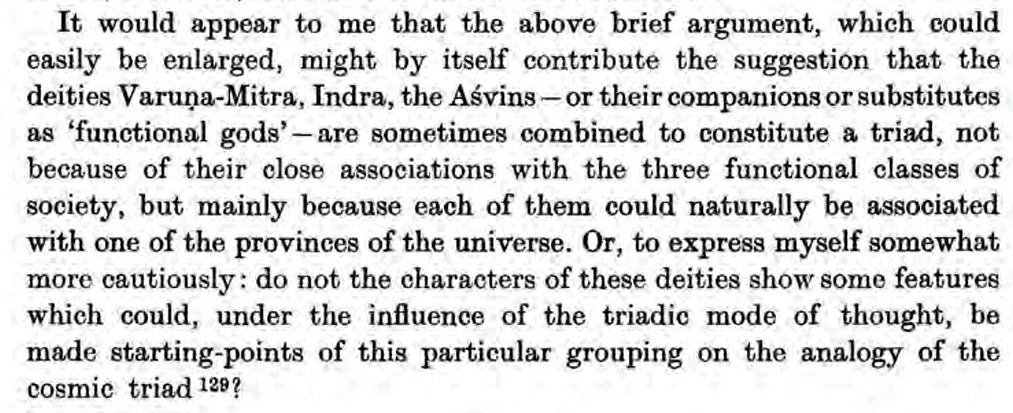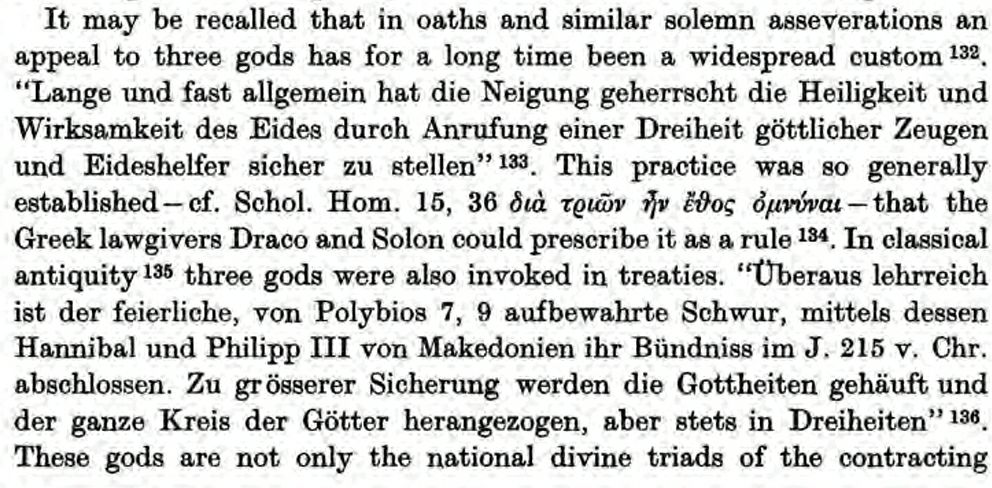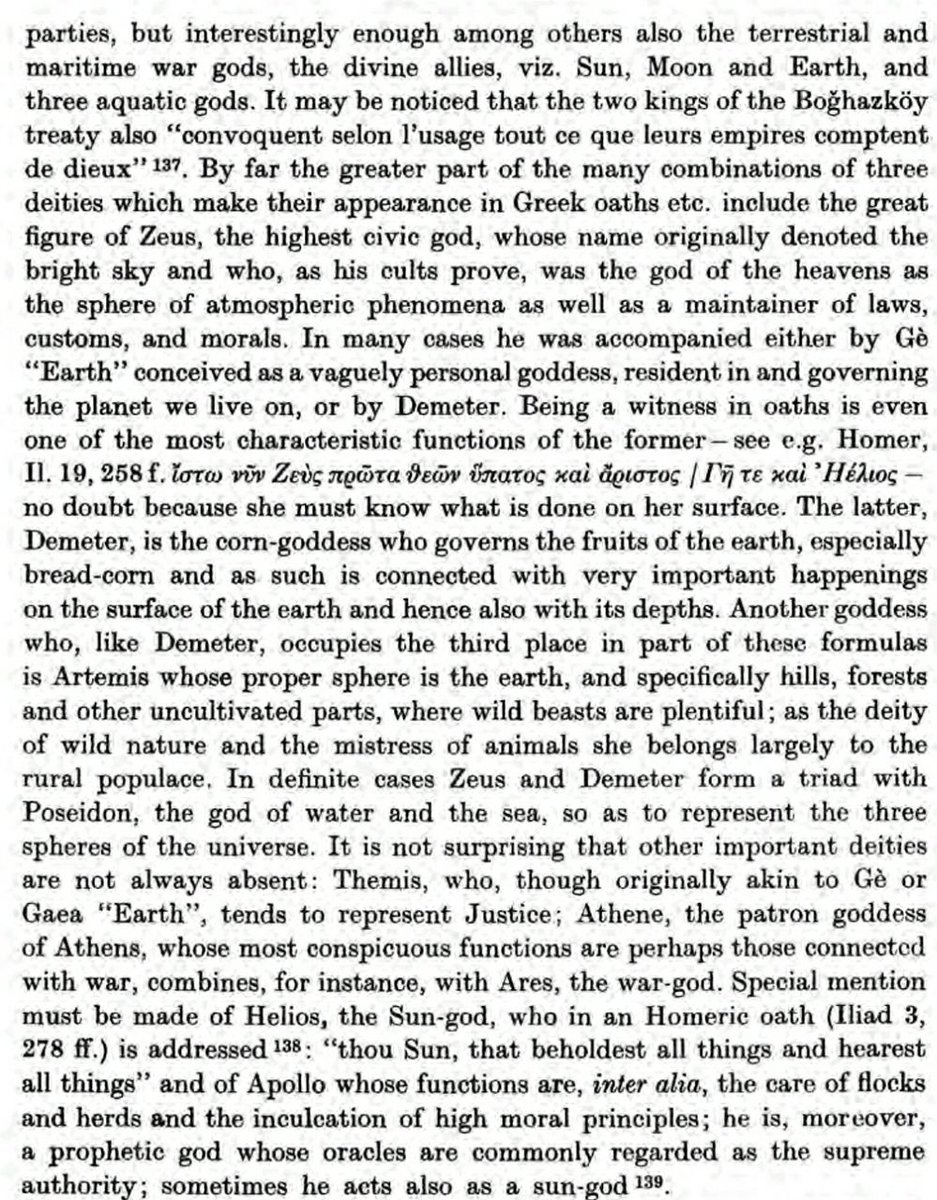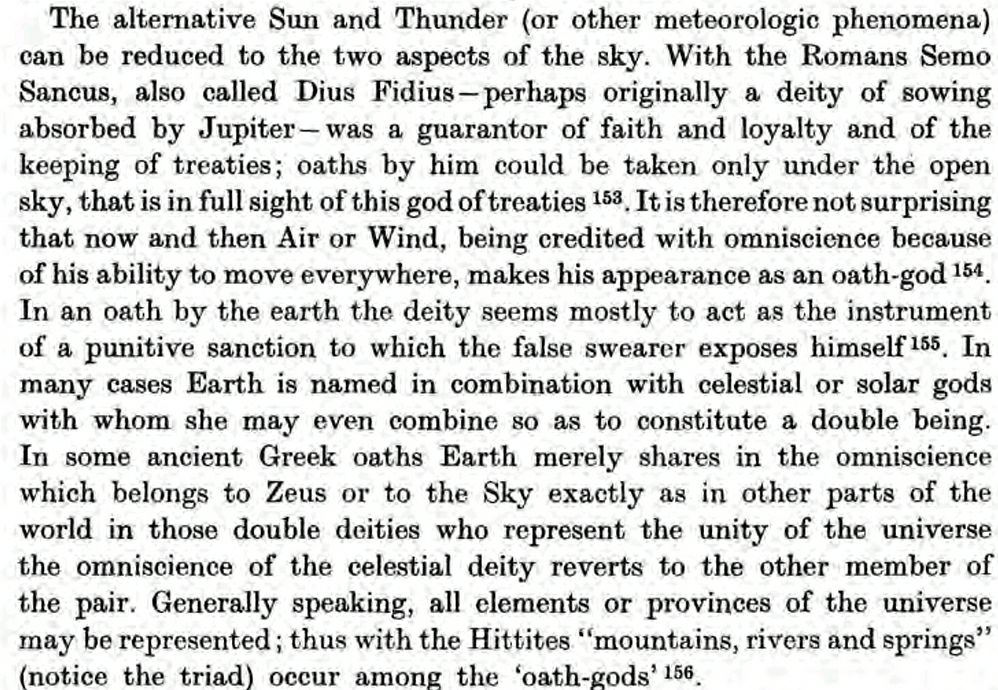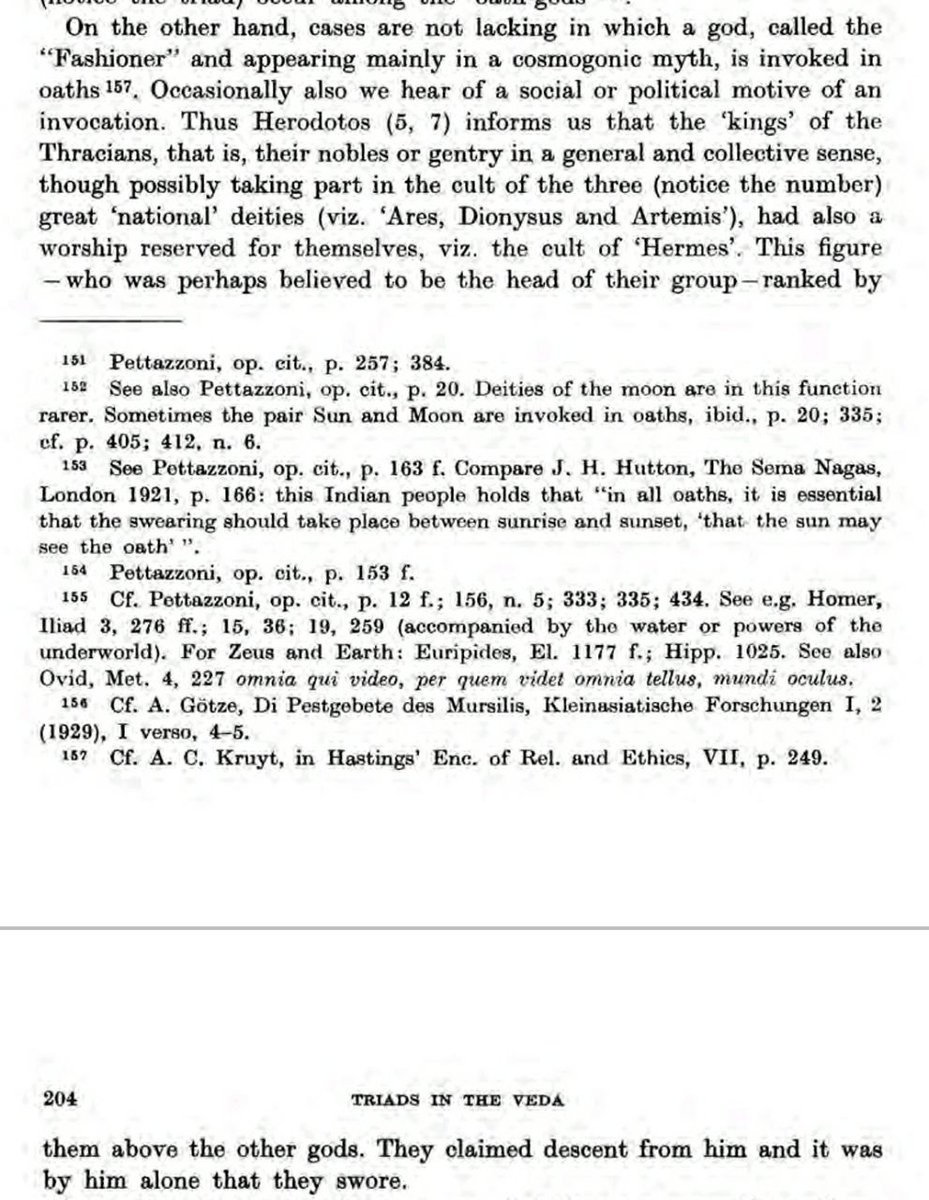Some gleanings can be noted of the so called 'functional triad' (a social tripartition based upon a 'triad of divinities') of Mitra-Varuṇa, Indra, & the twin Ásvins (certainly not the only such grouping in Vedic literature & surely not the foremost), a common IE phenomenon.
The deities Mitra & Varuṇa of the 'first function' are described as 'universal monarchs' w/both extolled as exercising authority of the whole world (ṚV 5.63.2), their abode being celestial & visited upon by the Sun who relays to them the deeds of men (ṚV 7.60.1), the duo whose
association serves as the transcendental connexion btwn the heavens & the high gods and who supervise the moral order is akin to the Greek Zeús, a divinity w/empyrean residence & the custodianship of law & morals of men. ∴~1° function is sacred sublimity to preserve the cosmos.
Indra thus, representing the 'second function', is a triadic sovereign of the atmosphere [the region btwn the heavens (Sūrya) and earth (Agni)] having close association w/Vāyu. Indra is also represented as the champion of all beings in the cosmos against chaos. That in the stead
of Vāyu, Agni can be associated with Indra (ṚV 10.125.1) is a curious oddity of the concept of Dual Deities in which the association of Indra-Agni was determined by their respective estates of Aryan society (in contradistinction to the 'Trifunctional' problem), the latter being
the divine hotṛ of the so called first estate or Brāhmaṇhood, the latter (among others) associated with the social class of warriors defined by 'kṣatrahood' [the third estate coordinated with Viśve Devāḥ representing the common people, w/Pūṣan* of the non-Aryan 4th estate].
The twin Aśvins represent the 'third function' & are promoters of fertility reminiscent of the Homeric hymn to earth. As such they are closely related with bees & honey (essence of fertility inducing saps ṚV 1. 112. 21), as well as patrons of agriculture bringing food the earth.
That the aforementioned cosmic triad does not just constitute societal tripartition but are naturally associated w/respective provinces of the universe does hearken of asseverations to 3 gods in Homer's Il. 15.36 (ἴστω νῦν τόδε Γαῖα καὶ..) akin to injunctions of Draco & Solon
The divine triads of seen in Homer's Iliad necessarily included Zeús (civic god of the heavens), Gé (feminine personification of earth), and Demeter (goddess of agriculture). Zeús & Demeter can form a triad w/Poseidon to represent the 3 spheres. Helios is invoked in oath as well.
Zeús is foremost among other gods as it relates to oath-taking, being both witness and punisher, whose omniscience precedes his function as arbiter of retribution unto the oath-breaker thus reminding us of the function of celestial or atmospheric gods in matters of morals of men.
The import of omniscience in fidelity towards treaties & oaths cannot be overstated: The Roman god Semo Sancus (Dius Fidulis) would be invoked to administer oaths only under open sky. Air, Wind, & Sun who shared aspects of the sky could manifest as oath gods alongside Earth.
The aforementioned curiosity of oath administration under 'open sky' is coupled with the Indian belief that all oaths should take place between sunrise and sunset so 'that the sun may see the oath'. In sociopolitical invocations, a cosmogonic so called 'Fashioner' god appears for
the benefit of the 'kings', nobles, and gentry of the Thracians (according to Herodotus) who no doubt subscribed to the national divine triad or cult of the three (Ares, Dionysus, and Artemis), but had reserved for themselves the worship of Hermes from whom they claimed descent.

 Read on Twitter
Read on Twitter

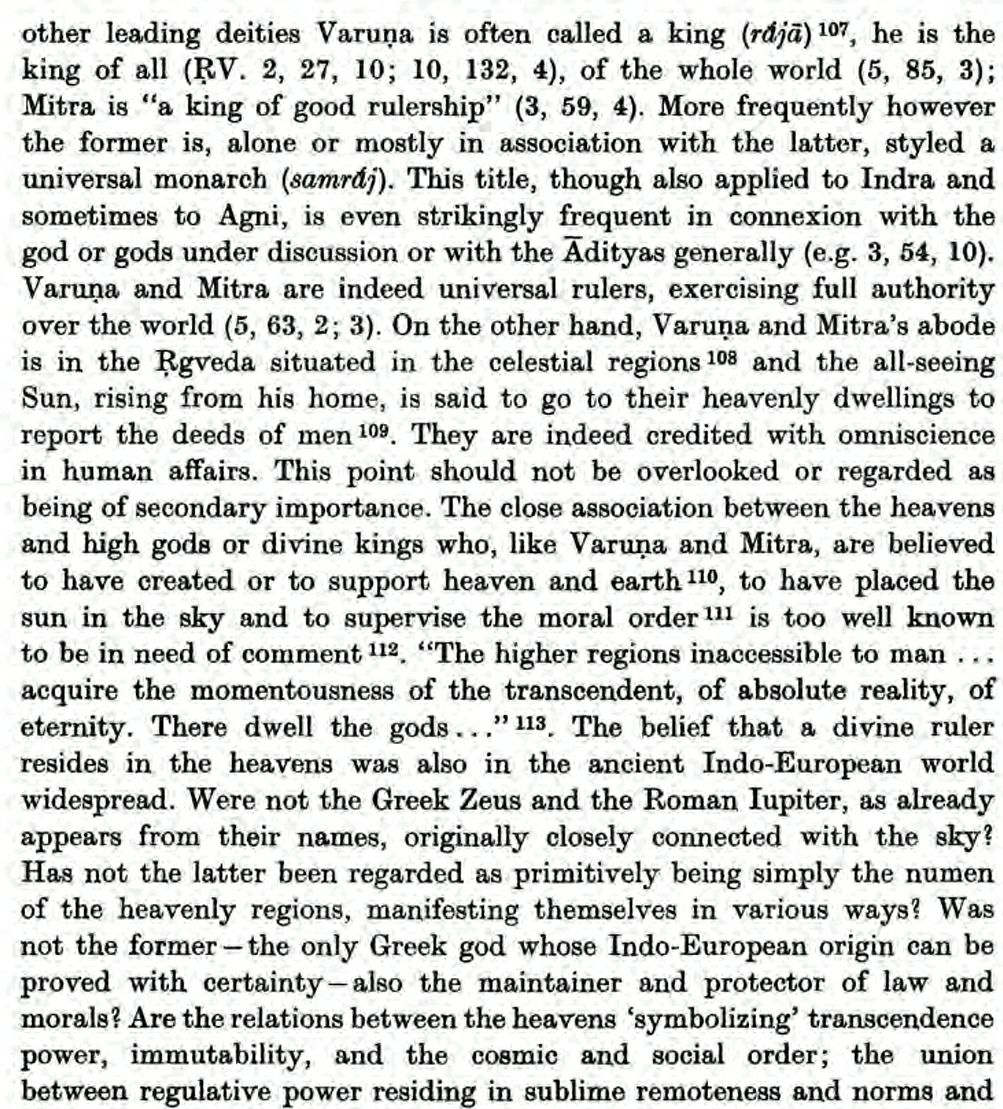
![Indra thus, representing the 'second function', is a triadic sovereign of the atmosphere [the region btwn the heavens (Sūrya) and earth (Agni)] having close association w/Vāyu. Indra is also represented as the champion of all beings in the cosmos against chaos. That in the stead Indra thus, representing the 'second function', is a triadic sovereign of the atmosphere [the region btwn the heavens (Sūrya) and earth (Agni)] having close association w/Vāyu. Indra is also represented as the champion of all beings in the cosmos against chaos. That in the stead](https://pbs.twimg.com/media/EpLOwgIXcAAFf16.jpg)
![the divine hotṛ of the so called first estate or Brāhmaṇhood, the latter (among others) associated with the social class of warriors defined by 'kṣatrahood' [the third estate coordinated with Viśve Devāḥ representing the common people, w/Pūṣan* of the non-Aryan 4th estate]. the divine hotṛ of the so called first estate or Brāhmaṇhood, the latter (among others) associated with the social class of warriors defined by 'kṣatrahood' [the third estate coordinated with Viśve Devāḥ representing the common people, w/Pūṣan* of the non-Aryan 4th estate].](https://pbs.twimg.com/media/EpLi5CWXIAAOmPR.jpg)

